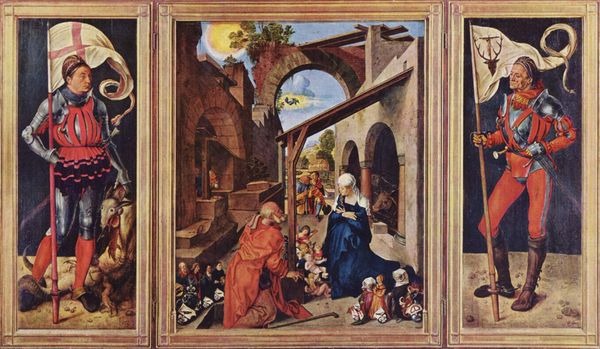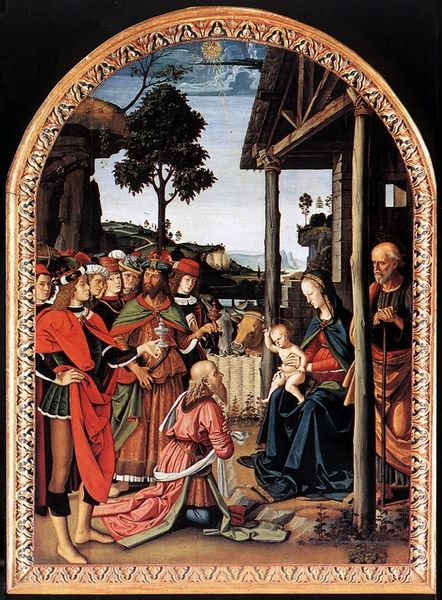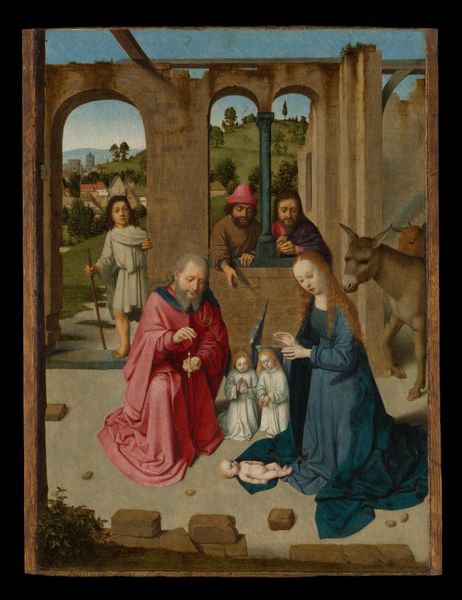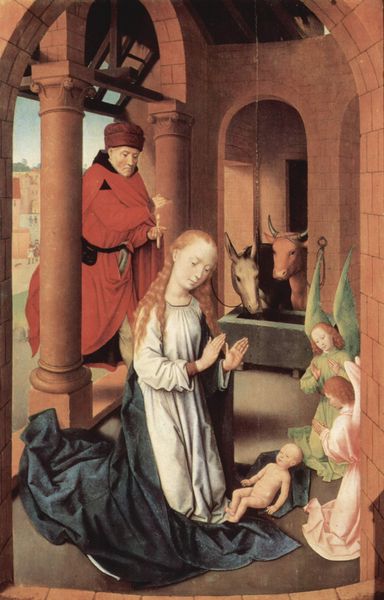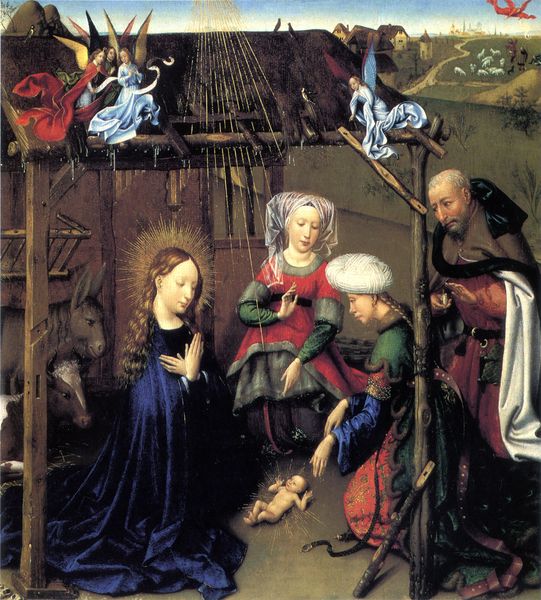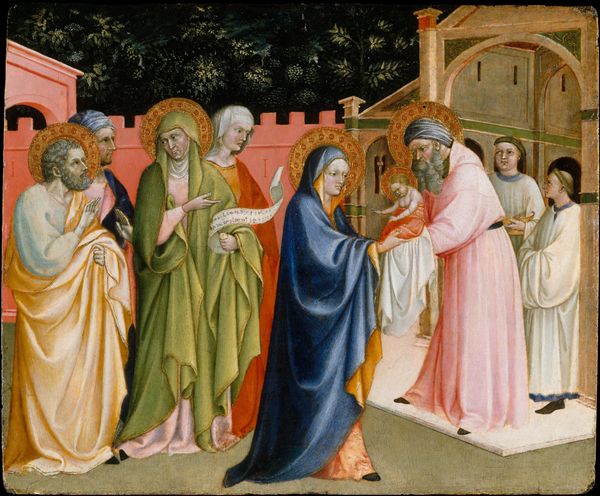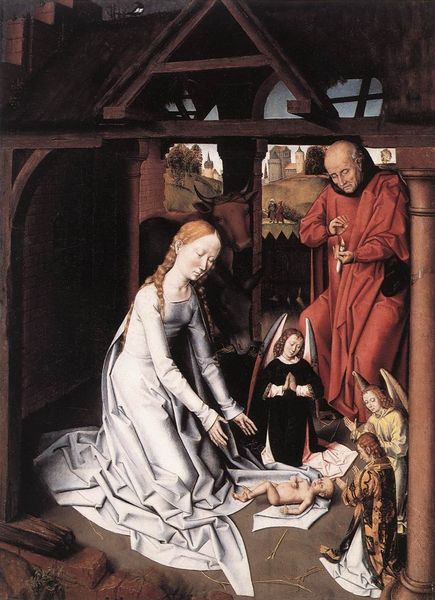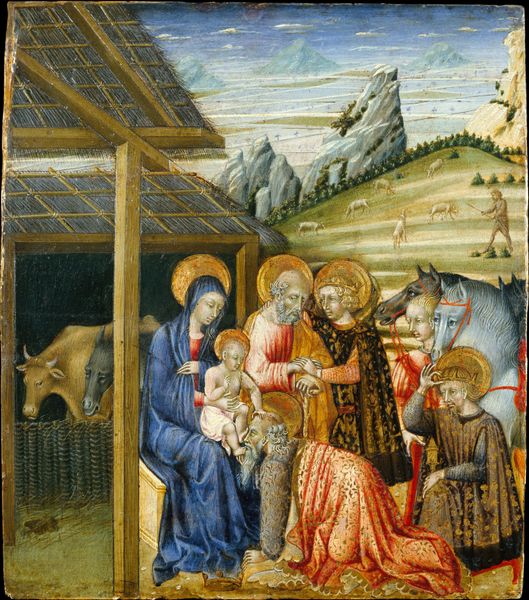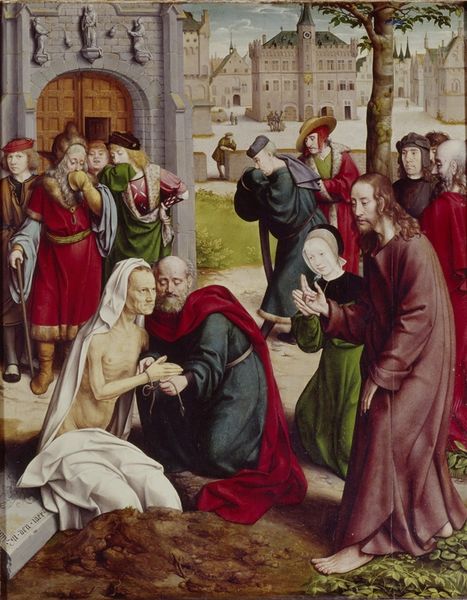
oil-paint
#
narrative-art
#
oil-paint
#
sculpture
#
figuration
#
oil painting
#
child
#
christianity
#
history-painting
#
italian-renaissance
#
mixed media
#
virgin-mary
#
christ
Copyright: Public domain
Editor: So this is Gerard David’s "Triptych with the Nativity" from 1515, done with oil paint. It's a classic scene, but I'm struck by how the figures on the side panels are almost… detached from the main event. What do you see in this piece? Curator: Ah, yes, a triptych invites us to read it, doesn’t it? The continuity of visual symbols across these panels is remarkable. Notice how the patrons on either side, although physically separated, are linked to the sacred scene through their gaze and posture. Consider how the kneeling posture carries echoes of supplication and piety throughout, connecting the earthly with the divine. The choice of including particular saints with certain donors would also speak volumes about their aspirations and anxieties. Editor: So, the saints would be relevant to the people in those side panels, sort of acting like… spiritual avatars? Curator: Precisely! And note how the Virgin's blue robe, rendered with such devotion, echoes through countless other depictions of motherhood across time and cultures. Think of the emotional weight that single color carries. This cultural memory is evoked, consciously or unconsciously, every time we see that Marian blue. Does that resonate with your reading of it? Editor: I hadn't thought about the robe as a repeating motif. The weight of tradition really is palpable here. It is kind of like an idea passed down, a visual echo through time. Curator: Exactly! David uses this visual language to tell a story that’s both immediate and timeless. Each element contributes to this powerful, resonating icon. Editor: Seeing it as a constellation of repeating symbols really adds another layer to my understanding. I won’t look at another Renaissance painting the same way again! Curator: And that, ultimately, is the enduring power of images. They connect us to a shared past and help us interpret the present.
Comments
No comments
Be the first to comment and join the conversation on the ultimate creative platform.

